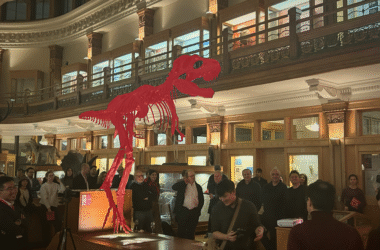A recent McGill study following the distribution patterns of the northern black widow and black purse-web spider populations hints at what the future of biodiversity research may look like in the digital age. Using previously collected observations from public online databases, McGill researchers have joined the increasing number of academics who harness the power of ‘citizen science.’
Comprised of an ever-growing class of novice researchers and biology enthusiasts, citizen scientists are helping researchers surmount a common obstacle: The deficiency of data. For a biodiversity study such as McGill’s, a large variety of data is required.
“Our study required species presence records and environmental data, [like] climate and land cover data, to predict the species distribution range,” Yifu Wang, a recent McGill graduate and senior author of the study, said.
In the past, researchers have relied primarily on their own observations or esteemed sources such as museum collections and historical literature when mapping distribution patterns. For species such as the black purse-web spider, on which minimal research exists, citizen science has proven a valuable tool for researchers who lack the resources to compile the data themselves.
To gather information, Wang and her colleagues turned to citizen scientists on wildlife observation sites like iNaturalist and BugGuide. Using these citizen-informed databases, the study found that the territory of the northern black widow spider has expanded northward while the black purse-web spider’s domain has stretched to the south. When comparing the study’s findings with historical species-distribution maps, it is evident that both species have experienced significant shifts from their native habitats over the last three decades.
“We determined what environmental factors best explain distributions and, for both species, temperature was the key driver,” Christopher Buddle, a professor in the Department of Natural Resource Sciences and researcher on the study, said to the The McGill Tribune.
Other factors, such as annual precipitation rate and seasonal variations of the climate, also contributed to changes in the spiders’ distribution.
“While our paper did not specifically address climate change, we can now use the current maps of these species and see how things change as the planet warms,” Buddle said.
While Buddle is pleased with the findings indicating a change in species distribution, equally revelatory was the study’s successful utilization of citizen science.
“A very high percentage of the data we had for both species came from [public databases], so the value of citizen science is immense,” Buddle said.
Although the researchers feel confident that the information gathered from online databases is factual, Buddle acknowledged that the risk of error is always present when using citizen science data. Fortunately, there are preventative measures in place, which preserve the value of citizen scientists accumulating data.
“Incorrect identifications on online platforms such as these are quickly and effectively handled by experts,” Buddle said.
The observer community regulates the quality of identifications by vetting all posted information, employing a peer-review approach similar to that which is standard in scientific research.
The new study is an encouraging example of how the scientific community at large may begin to take citizen science seriously, employing online data in all facets of ecological and epidemiological research.
“There is immense value to leveraging the passion of citizens in contributing to meaningful science,” Buddle said. “The scientific community will benefit from all citizens who engage with and participate directly in science, and, in turn, the science will better serve the public.”






